These drills are designed to improve players' footwork, coordination, and reaction times, making them better equipped to handle quick changes in play and defend against opposing players. By incorporating these drills into practice routines, coaches can help their team become a force to be reckoned with on the field.
Introduction: The Importance of Agility in Soccer
Soccer is a sport that requires a great deal of agility. Agility refers to the ability to change direction quickly and accurately while maintaining balance and control. Without agility, a soccer player may struggle to keep up with the fast-paced movements of the game, especially on defense.
Agility is especially important for defenders. Defenders need to be able to quickly shift their body weight and change direction to keep up with attacking players rather than chase them. They also need to be able to react quickly to unexpected movements and make split-second decisions about how to defend the goal.
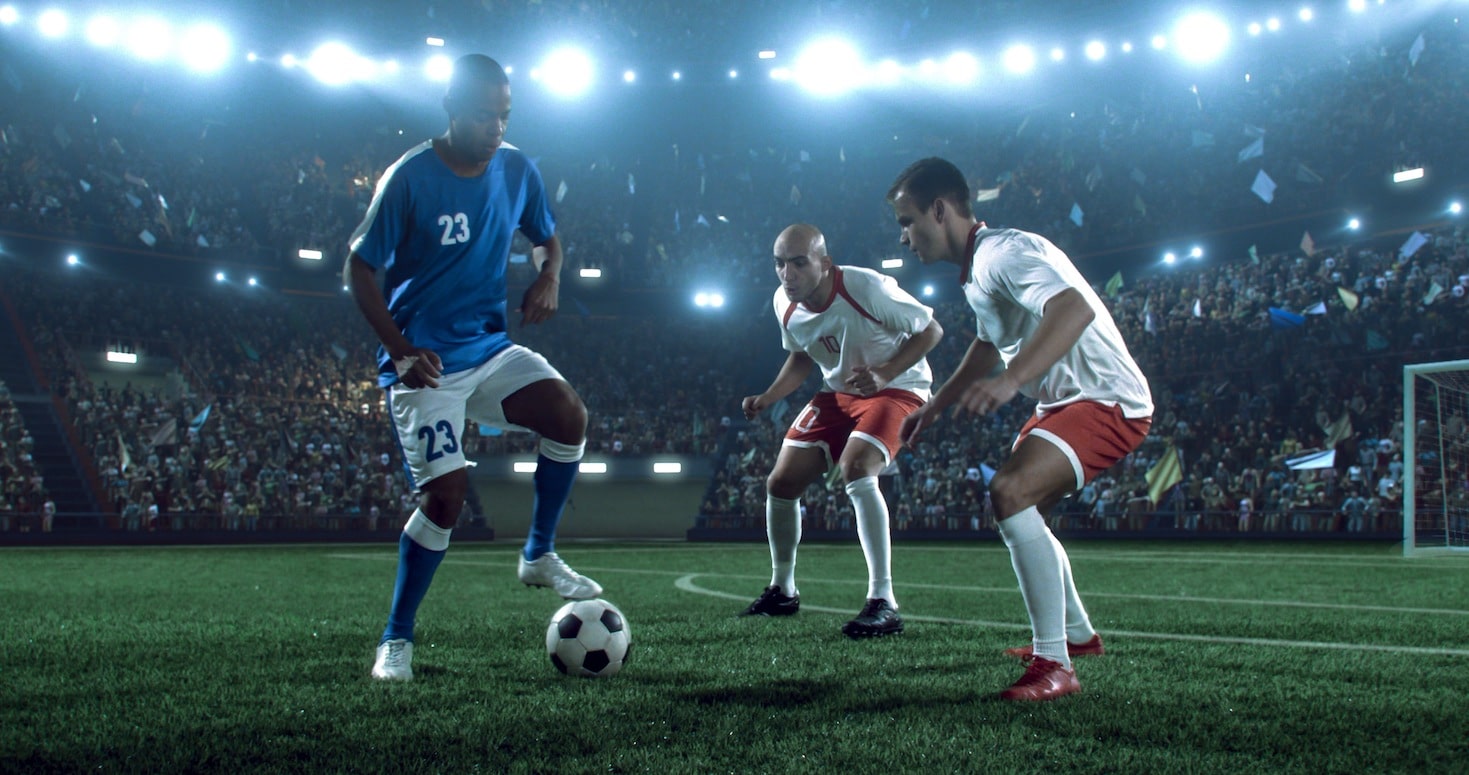
One way to improve agility is through regular training exercises that focus on quick changes of direction and fast foot speed, such as ladder drills, cone drills, and shuttle runs. These exercises can help players improve their footwork, reaction time, and overall agility.
Another important aspect of agility in soccer is body control. Players who have good body control are able to make quick movements without losing their balance or control. This can be especially important for defenders who need to make sudden stops and changes of direction while still maintaining their position on the field.

Agility is a key aspect of soccer, especially for defenders. By incorporating regular agility training exercises into their routines, players can improve their footwork, reaction time, and overall body control, which can help them become more effective on the field.
Players that Showcase Agility at the Highest Standard
Agility is a key component of a soccer player's skill set. It allows them to move quickly, change direction, and react to the fast-paced nature of the game. Some players stand out above the rest when it comes to agility and their ability to showcase it on the field.
One such player is Lionel Messi, who is widely regarded as one of the best soccer players of all time. Messi's agility is a key part of his game, allowing him to weave through defenders and create scoring opportunities for himself and his teammates. His low center of gravity and lightning-fast footwork make him incredibly difficult to defend against.

Messi is one of the world's most agile players.
Another player known for his agility is Cristiano Ronaldo. Ronaldo is known for his explosive speed and quick reflexes, which allow him to make split-second decisions on the field. His agility also comes in handy when he's trying to evade defenders and create space for himself to take a shot on goal.
Neymar Jr. is another player who showcases agility at the highest standard. His ability to change direction quickly and effortlessly is a key part of his game, allowing him to get past defenders and create scoring opportunities for himself and his teammates. His agility also makes him a dangerous player on set pieces, where he's able to make quick runs and get into position to score.

Agility is a crucial skill for any soccer player to have, but these players take it to the next level with their lightning-fast footwork and ability to change direction on a dime.
Cone Drills for Quick Footwork
When it comes to developing agility for soccer defense, cone drills are an excellent exercise to incorporate into your training regimen. These drills involve setting up cones in a specific pattern and then running through them as quickly and efficiently as possible. By doing so, you'll develop the quick footwork necessary to change directions quickly and keep up with opposing players.
One common cone drill is the "zigzag" drill, which involves setting up cones in a slalom pattern and then running through them, transferring your weight from one foot to the other as quickly as possible. Another effective cone drill is the "box" drill, which involves setting up cones in a square pattern and then running around the perimeter of the square, touching each cone with your foot as you pass by.
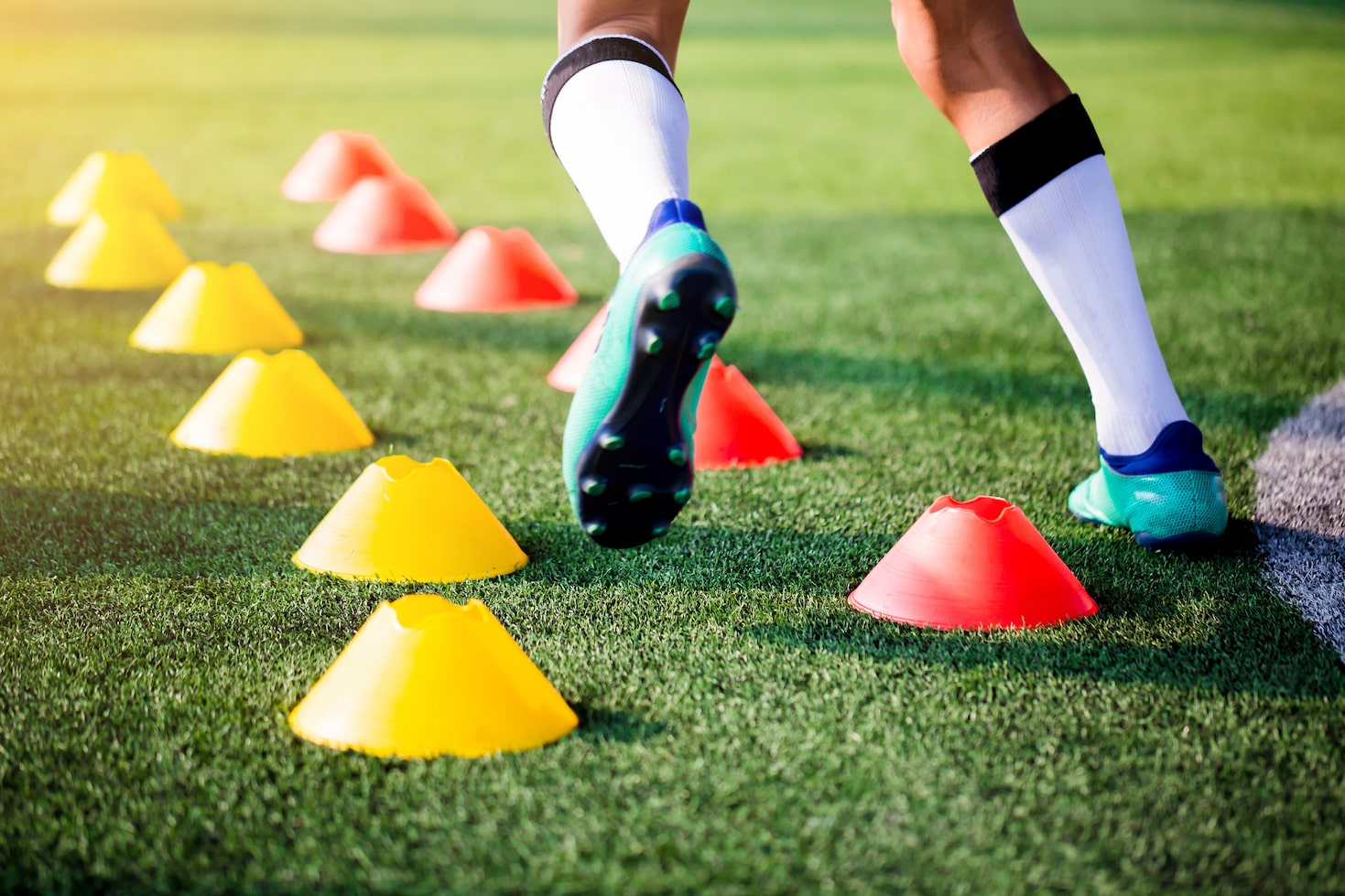
It's important to start slowly and focus on proper technique when performing cone drills. As you become more comfortable with the exercise, you can increase the speed and intensity to further develop your agility.
Another cone drill that can improve your footwork and agility in soccer defense is the "T-drill." This drill involves setting up cones in the shape of a T, with one cone at the top and two cones at the bottom. You start by standing at the top cone and sprinting down to the first cone at the bottom, touching it with your hand or foot before sprinting diagonally up to the second cone at the bottom, touching it, and then sprinting back to the top cone.
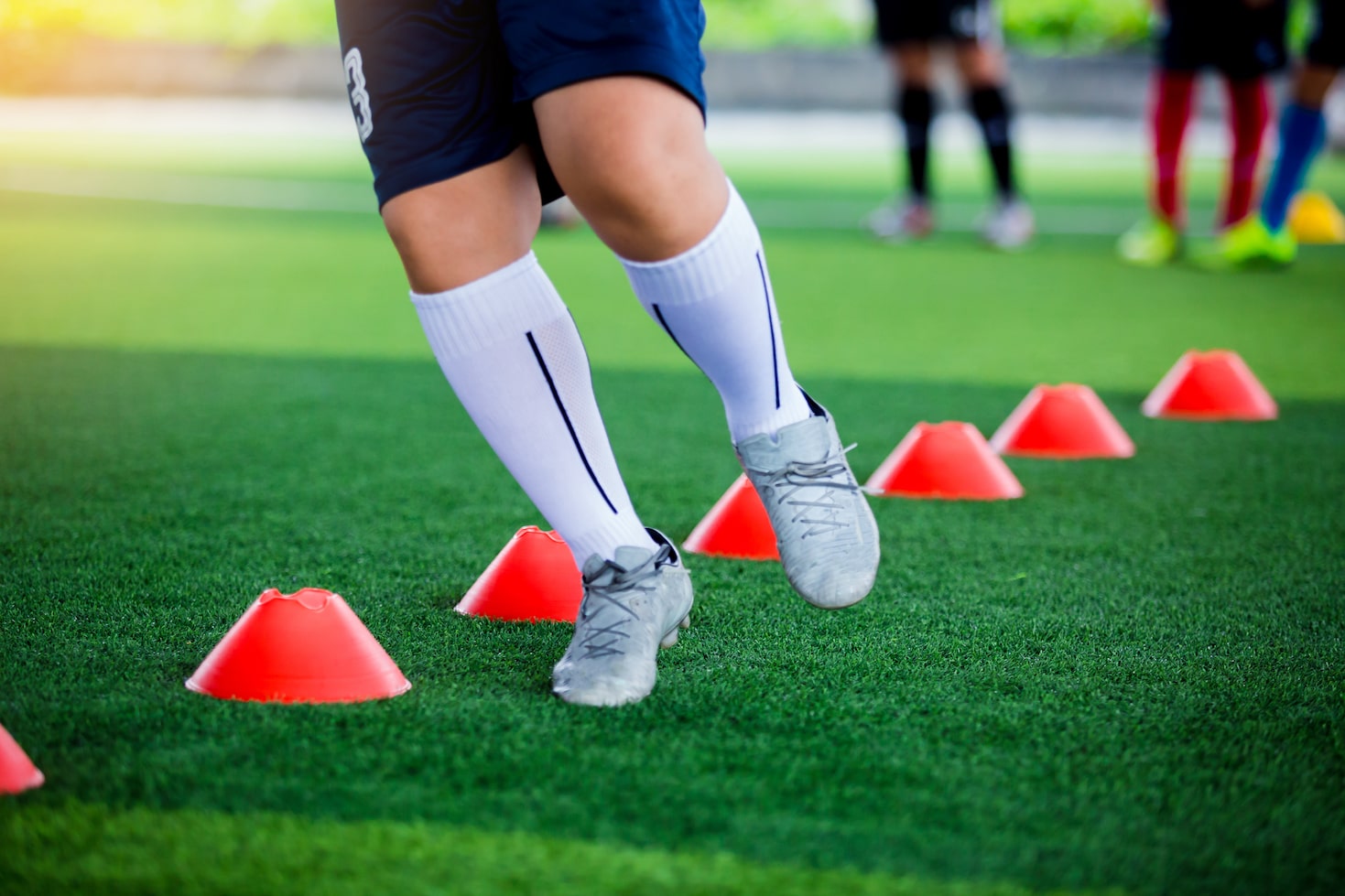
The T-drill is great for improving your ability to change directions quickly and efficiently, as well as for developing your overall speed and quickness. As with any cone drill, it's important to start slowly and focus on proper technique before increasing your speed and intensity. Make sure to keep your knees bent and your weight balanced as you move through the cones, and try to maintain a low center of gravity to improve your stability and control.
Ladder Drills for Coordination and Balance
As a soccer coach, one of your primary objectives is to make sure your team is practicing drills that improve their coordination and balance. These skills are essential for successful defense in the game, and one of the best ways to develop them is through ladder drills.
Ladder drills are simple, yet effective exercises that help players improve their agility, footwork, and coordination. The drills consist of players running through a set of cones or markers arranged in a ladder-like pattern. The cones are placed a short distance apart, and players must move quickly and accurately between them.
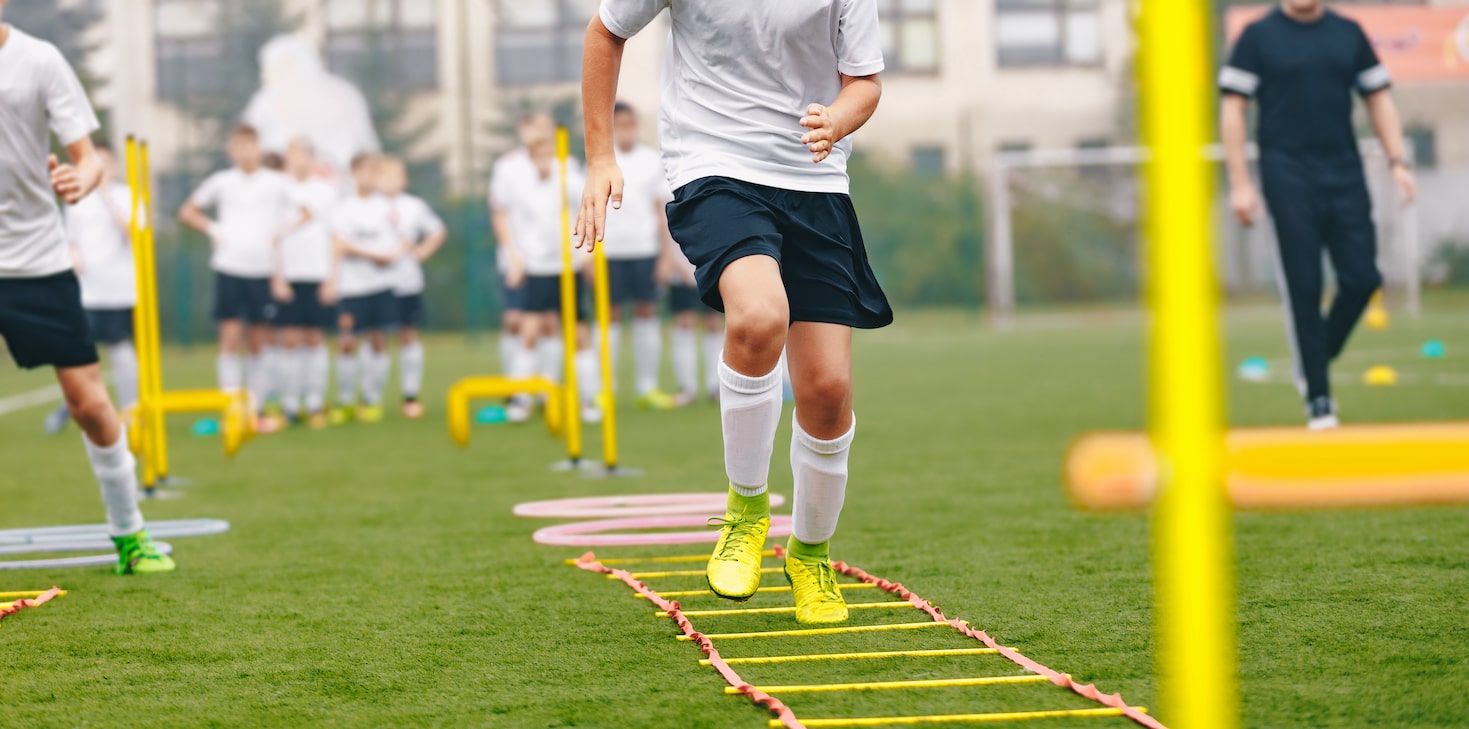
The key to ladder drills is to maintain proper form and balance throughout the entire exercise. Players must keep their feet close to the ground, maintain a slight forward lean, and keep their hips and shoulders aligned. This helps improve their balance and stability, which is essential for successful defense.
There are many variations of ladder drills that you can incorporate into your team's training regimen. Some of the most popular ones include the two-step drill, the one-step drill, and the hopscotch drill. Each of these drills focuses on different aspects of coordination and balance, and all are very effective at improving a player's overall performance.

Ladder drills are an excellent way to improve your team's coordination and balance on the soccer field. By incorporating these exercises into your training regimen, you can help your players develop the skills they need to become successful defenders. So, consider adding ladder drills to your next practice session and watch your team's performance soar.
Shuttle Runs for Acceleration and Deceleration
Soccer is a sport that requires players to have exceptional bursts of speed and agility on the field. Being able to accelerate and decelerate quickly is crucial in both offensive and defensive positions. One effective way to improve these skills is through shuttle runs.
Shuttle runs involve setting up a course with cones placed a certain distance apart. Players then run back and forth between the cones as quickly as possible, alternating between running forwards and backwards. This exercise helps players develop their acceleration and deceleration skills, as well as their ability to change direction quickly.
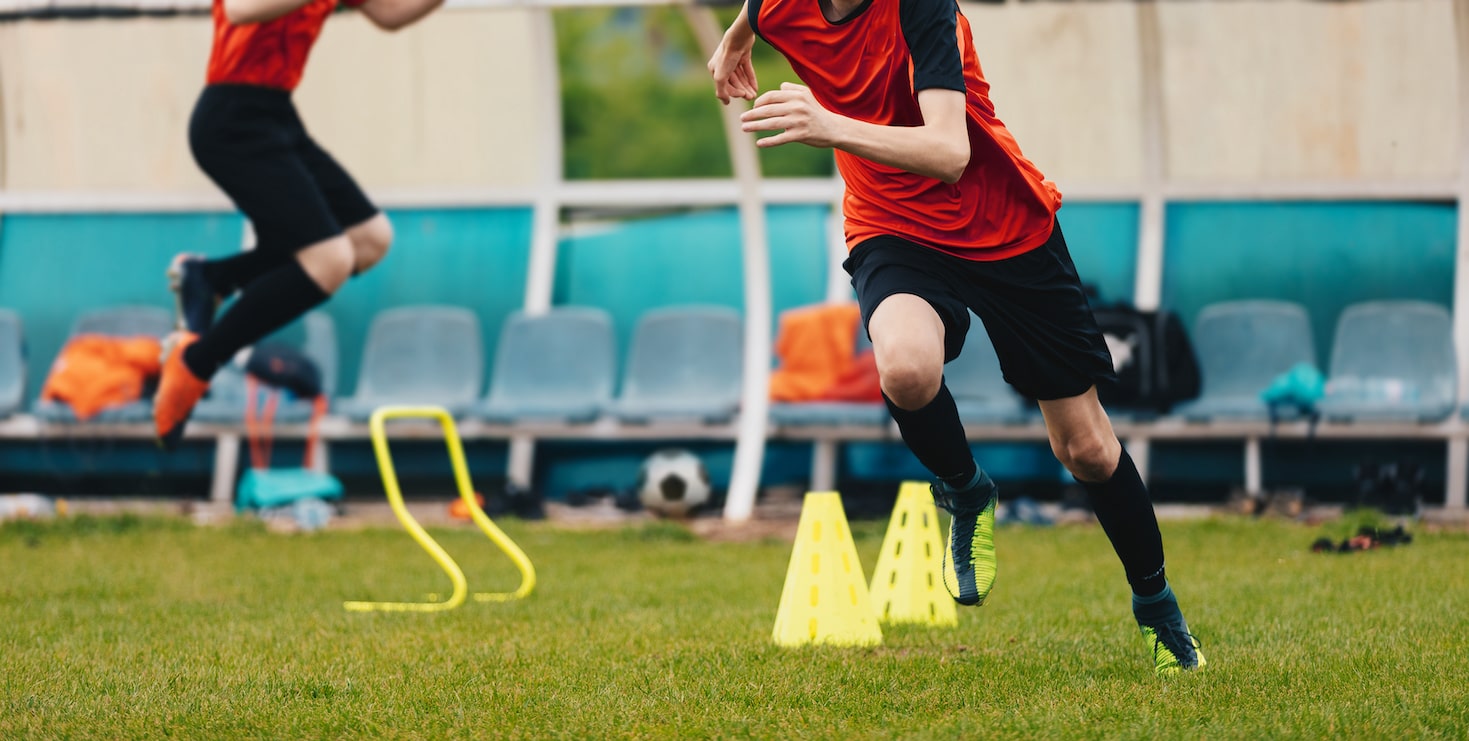
There are several variations of shuttle runs that coaches can use to tailor the exercise to their team's specific needs. For example, coaches can vary the distance between cones, the number of cones, and the type of movement required (e.g. side shuffling, sprinting backwards, etc.) creating super shuttle runs. Additionally, coaches can add a ball to the exercise to simulate game situations and help players improve their ball control skills.
When incorporating shuttle runs into a training session, coaches should emphasize proper technique and form. Players should focus on taking short, quick steps and maintaining a low center of gravity to improve their acceleration and deceleration. Additionally, coaches should encourage players to stay on the balls of their feet and avoid leaning too far forward or backward, which can lead to slower movement and increased risk of injury.
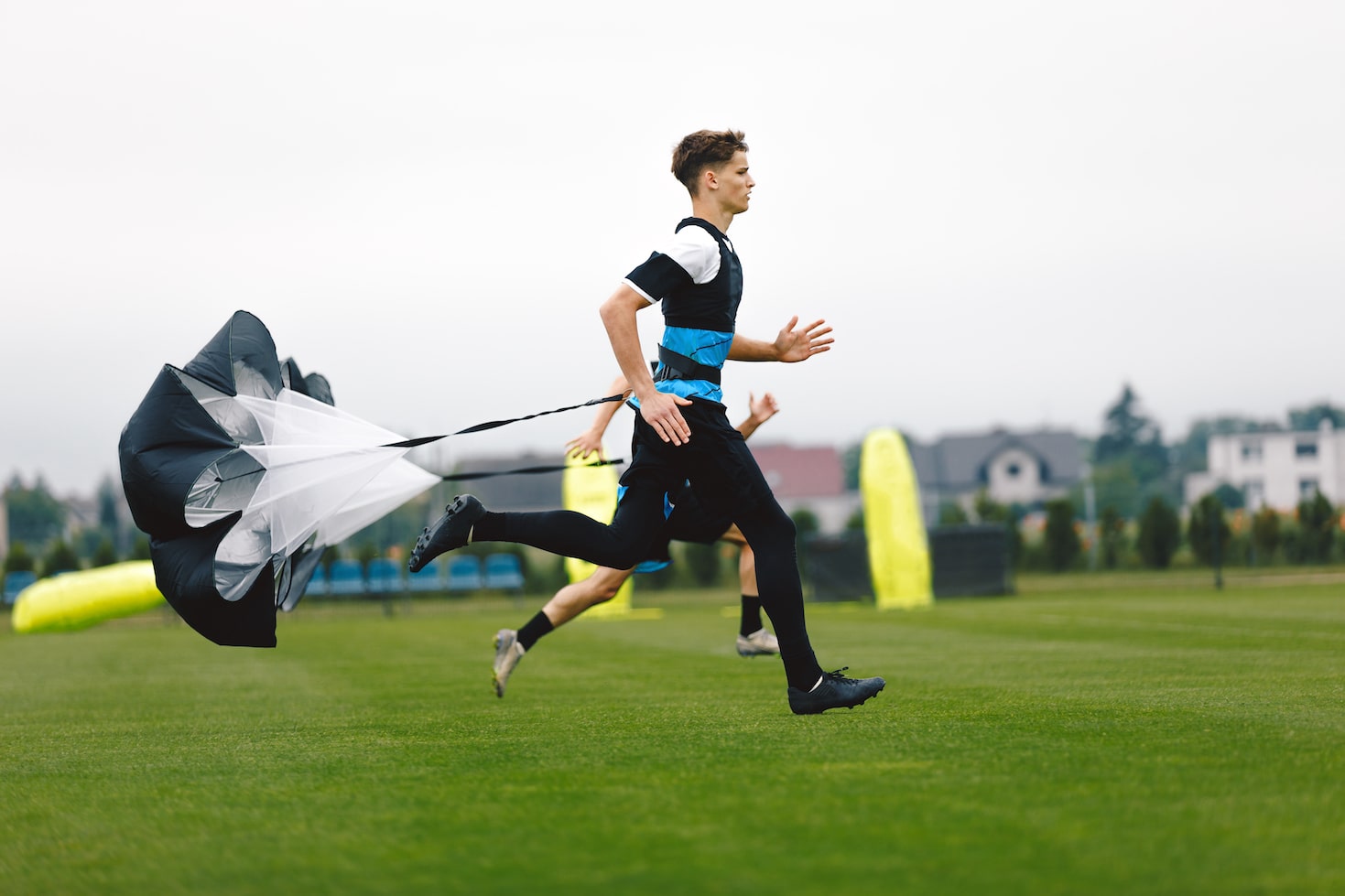
Overall, shuttle runs are a highly effective way to improve a team's speed and agility on the field. By incorporating this exercise into their training sessions, coaches can help their team build their acceleration.
Hurdle Jumps for Explosiveness and Timing
Hurdle jumps are an excellent exercise for soccer players who want to improve their explosiveness and timing on the field. This exercise involves tuck jumps over a series of hurdles in quick succession, which helps to develop explosive power in the lower body and improve coordination and timing.
To perform hurdle jumps, you will need a set of hurdles or cones set up in a straight line. Begin by standing in front of the first hurdle with your feet shoulder-width apart. Jump over the hurdle with both feet, then immediately jump over the next hurdle, and so on until you have cleared all the hurdles in the line.
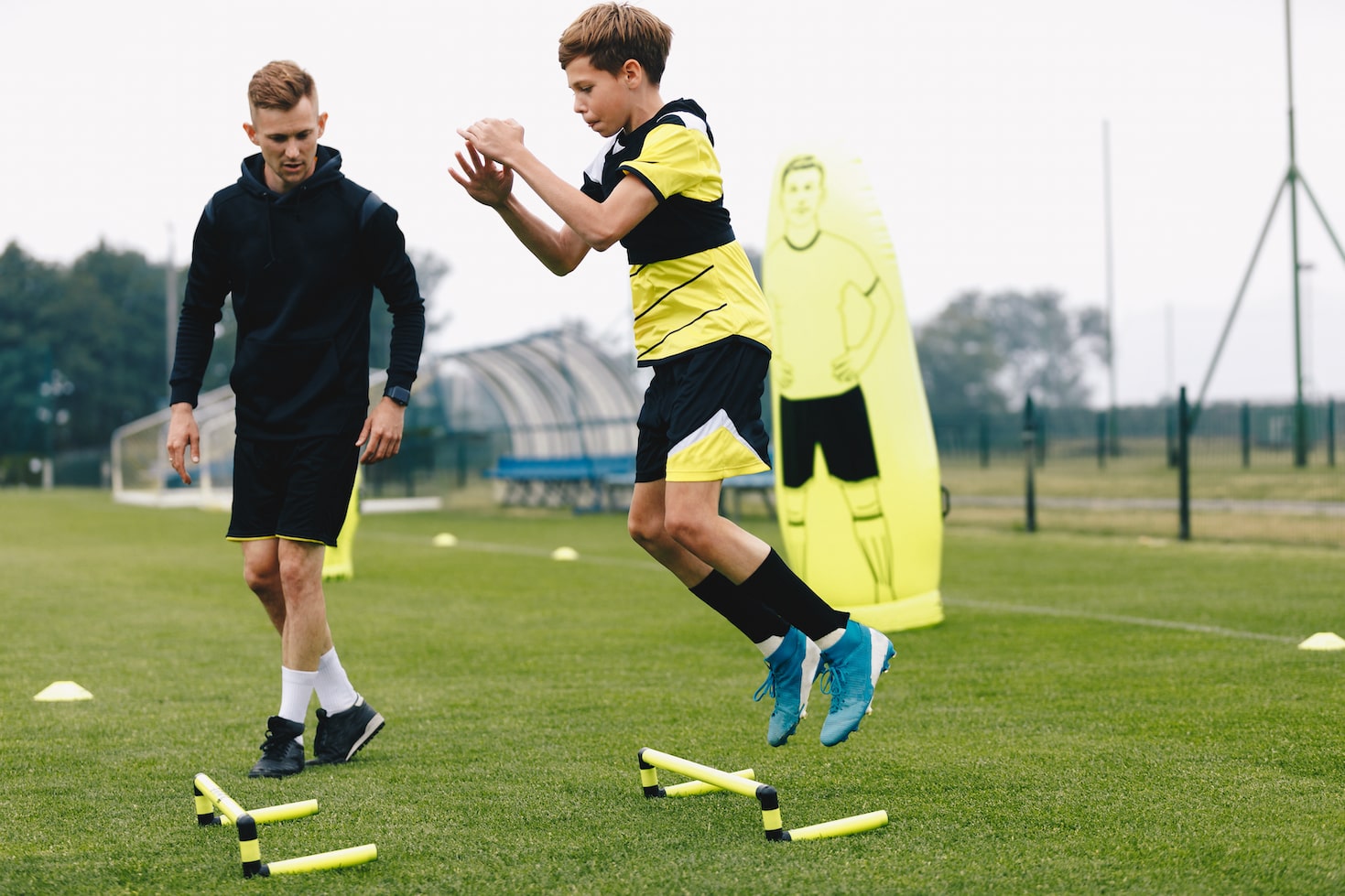
Be sure to keep your knees bent and your core engaged throughout the exercise. Land softly on the balls of your feet and immediately jump again to clear the next hurdle. This exercise can be done for time or for reps, depending on your fitness level and goals.
Hurdle jumps are a great way to develop explosiveness and timing on the soccer field. Incorporate this exercise into your training routine to improve your agility and reaction time, and take your game to the next level. As with any new exercise, be sure to start slowly and gradually increase intensity to avoid injury.
How to Coach Agility in Soccer
Agility is an essential aspect of soccer, and coaching it can be challenging. One way to improve agility is by incorporating small-sided games into training sessions. These games can include one-on-one, two-on-two, or three-on-three situations, which require players to be agile and quick on their feet. By playing these games regularly, players can develop their agility and reaction time in a fun and competitive way.
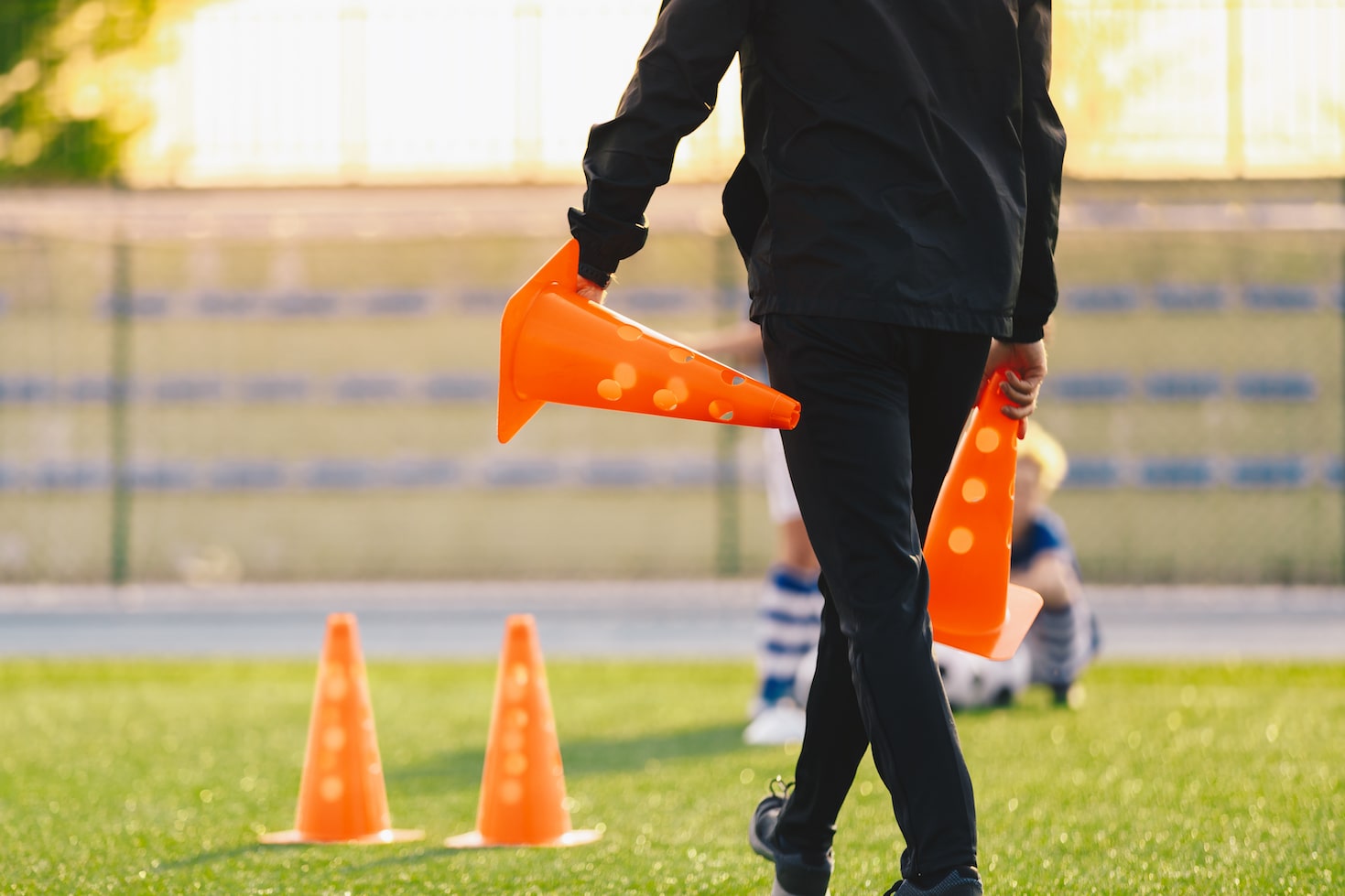
Another way to coach agility is by focusing on footwork during ball control drills. Coaches can emphasize the importance of quick and precise foot movements when dribbling or passing the ball. By practicing these skills regularly, players can improve their agility on the field and become more confident in their abilities.
Coaches can also incorporate agility exercises into warm-up routines. These exercises can include side shuffles, high knees, and lateral hops, which help to improve balance, coordination, and agility. By warming up with these exercises, players can prepare their bodies for the demands of the game and reduce the risk of injury.
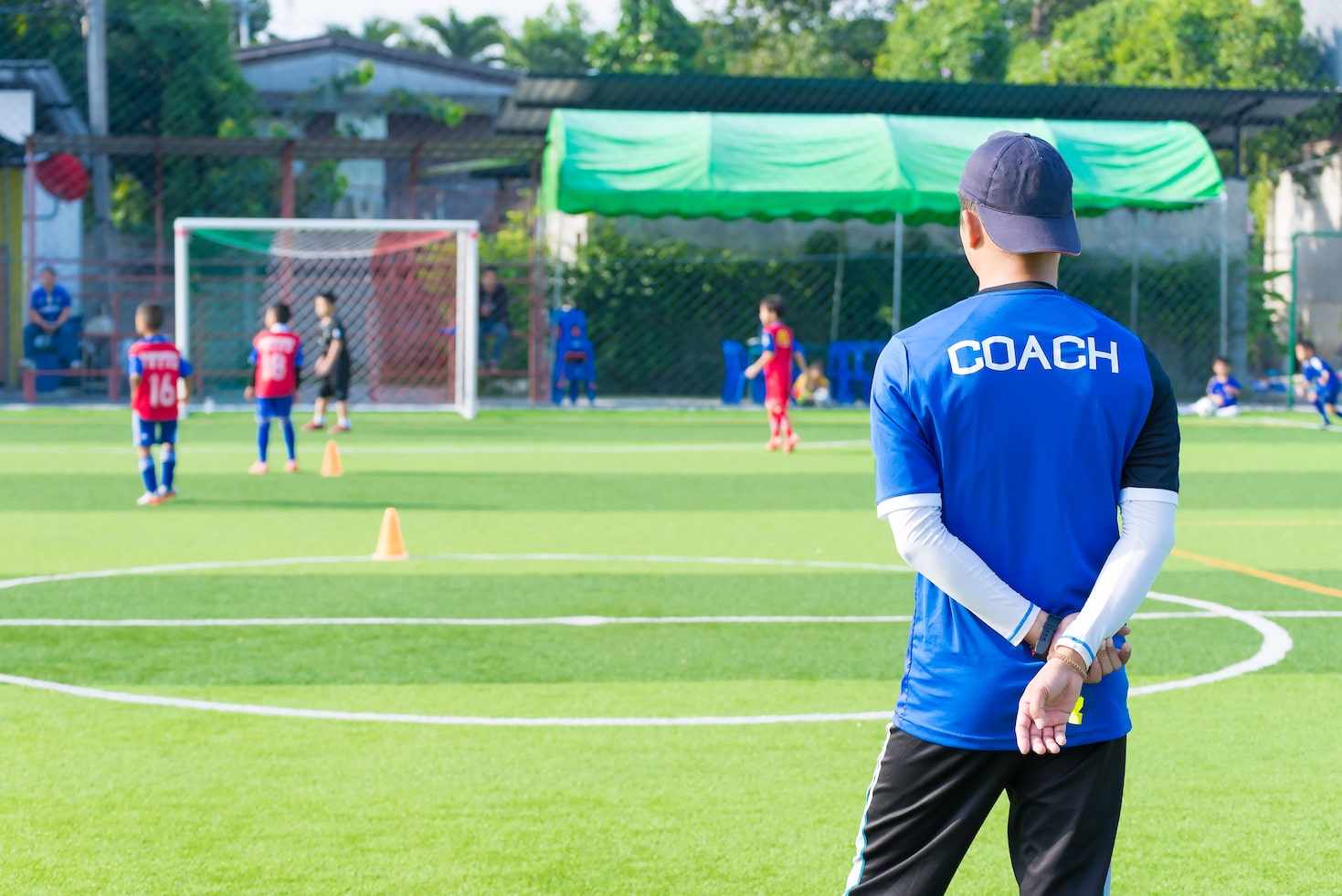
Finally, coaches can encourage players to stay active and engage in other physical activities outside of soccer. Activities like running, cycling, or swimming can help to improve overall fitness and agility, which can translate to better performance on the field.
Coaching agility in soccer requires a holistic approach that goes beyond traditional drills and exercises. By incorporating small-sided games, emphasizing footwork, incorporating agility exercises into warm-ups, and encouraging players to stay active outside of soccer, coaches can help their team.


Improve Your GameJust 1.99 p/m
Exclusive drills and sessions, get involved today!
- 100’s of Drills
- Coach to Camera Videos
- Sessions from Pro’s
- Industry Leading Advice
Conclusion: Incorporating Agility Drills into Your Training Routine
Incorporating agility drills into your training routine is essential for any soccer player looking to improve their defense. These drills help increase a player's speed, footwork, and reaction time, making them more effective at intercepting passes and stopping opposing players. As a coach or professional, it's essential to add a variety of agility drills to your training routine, including ladder drills, cone drills, and plyometric exercises. By doing so, you can help your players become more agile and better defenders, ultimately improving their performance on the field. So, incorporate agility drills into your training routine today and watch your team's defense soar to new heights!
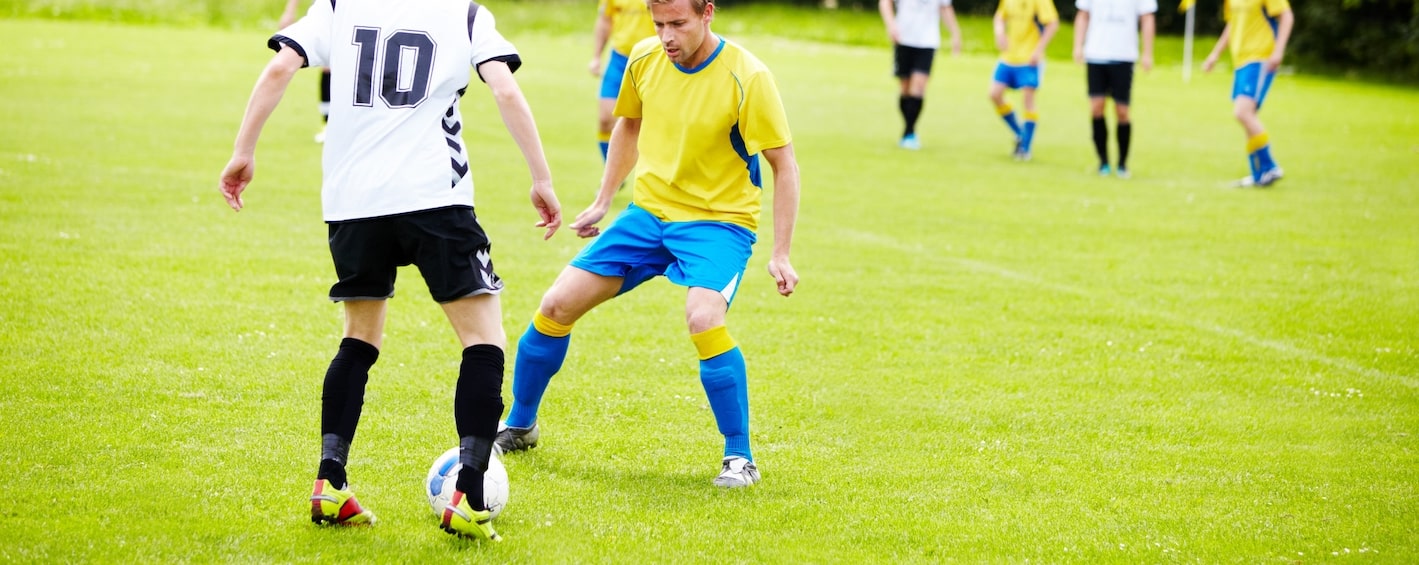


Cupello
Rethinking soccer coaching via our industry leading tools. Built to offer effective coaching development solutions for players and coaches of all levels.